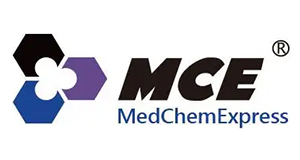Permethrin, CAS 52645-53-1
Permethrin, CAS 52645-53-1
SKU
MEXHY-B0887-1G
Packaging Unit
1 g
Manufacturer
MedChemExpress
Availability:
loading...
Price is loading...
Product Description: Permethrin (NRDC-143) is an insecticide, acaricide and a high selectively inhibitor of the Mitochondrial complex I, found in sediment and water samples. Permethrin shows estrogenic in vivo and anti-estrogenic activity in vitro. Permethrin also acts as a neurotoxin affecting neuron membranes by prolonging Sodium channel activation. Permethrin decreases resistance to bacterial infections in medaka (Oryzias latipes)[1][2][3][4][5][6][7].
Applications: COVID-19-immunoregulation
Formula: C21H20Cl2O3
References: [1]Xiao X, et al. Exposure to permethrin promotes high fat diet-induced weight gain and insulin resistance in male C57BL/6J mice. Food Chem Toxicol. 2018 Jan;111:405-416./[2]Smith LB, et al. CYP-mediated permethrin resistance in Aedes aegypti and evidence for trans-regulation. PLoS Negl Trop Dis. 2018 Nov 19;12(11):e0006933./[3]Shelley LK, et al. Immunotoxic and cytotoxic effects of atrazine, permethrin and piperonyl butoxide to rainbow trout following in vitro exposure[J]. Fish Shellfish Immunol. 2012 Aug;33(2):455-8./[4]Gassner B, et al. The pyrethroids permethrin and cyhalothrin are potent inhibitors of the mitochondrial complex I[J]. Journal of Pharmacology and Experimental Therapeutics, 1997, 281(2): 855-860./[5]Kakko I, et al. The synaptosomal membrane bound ATPase as a target for the neurotoxic effects of pyrethroids, permethrin and cypermethrin[J]. Chemosphere. 2003 May;51(6):475-80./[6]Brander SM, et al. The in vivo estrogenic and in vitro anti-estrogenic activity of permethrin and bifenthrin. Environ Toxicol Chem. 2012 Dec;31(12):2848-55./[7]Omotoso G, et al. Permethrin exposure affects neurobehavior and cellular characterization in rats' brain. Environ Anal Health Toxicol. 2020 Dec;35(4):e2020022-0.
CAS Number: 52645-53-1
Molecular Weight: 391.29
Compound Purity: 98.0
Research Area: Infection; Neurological Disease
Solubility: DMSO : 50 mg/mL (ultrasonic)
Target: Mitochondrial Metabolism;Na+/K+ ATPase;Parasite;Sodium Channel
Applications: COVID-19-immunoregulation
Formula: C21H20Cl2O3
References: [1]Xiao X, et al. Exposure to permethrin promotes high fat diet-induced weight gain and insulin resistance in male C57BL/6J mice. Food Chem Toxicol. 2018 Jan;111:405-416./[2]Smith LB, et al. CYP-mediated permethrin resistance in Aedes aegypti and evidence for trans-regulation. PLoS Negl Trop Dis. 2018 Nov 19;12(11):e0006933./[3]Shelley LK, et al. Immunotoxic and cytotoxic effects of atrazine, permethrin and piperonyl butoxide to rainbow trout following in vitro exposure[J]. Fish Shellfish Immunol. 2012 Aug;33(2):455-8./[4]Gassner B, et al. The pyrethroids permethrin and cyhalothrin are potent inhibitors of the mitochondrial complex I[J]. Journal of Pharmacology and Experimental Therapeutics, 1997, 281(2): 855-860./[5]Kakko I, et al. The synaptosomal membrane bound ATPase as a target for the neurotoxic effects of pyrethroids, permethrin and cypermethrin[J]. Chemosphere. 2003 May;51(6):475-80./[6]Brander SM, et al. The in vivo estrogenic and in vitro anti-estrogenic activity of permethrin and bifenthrin. Environ Toxicol Chem. 2012 Dec;31(12):2848-55./[7]Omotoso G, et al. Permethrin exposure affects neurobehavior and cellular characterization in rats' brain. Environ Anal Health Toxicol. 2020 Dec;35(4):e2020022-0.
CAS Number: 52645-53-1
Molecular Weight: 391.29
Compound Purity: 98.0
Research Area: Infection; Neurological Disease
Solubility: DMSO : 50 mg/mL (ultrasonic)
Target: Mitochondrial Metabolism;Na+/K+ ATPase;Parasite;Sodium Channel

 Deutsch
Deutsch










